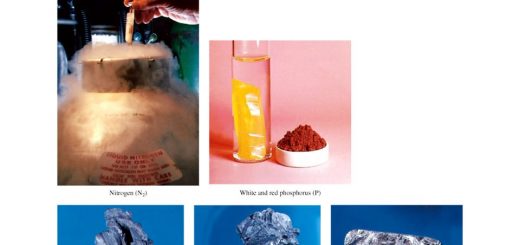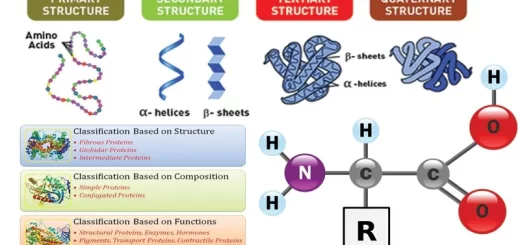Quantitative analysis, Gravimetric analysis, Standard solutions, Precipitation and Titration
Avogadro’s Number is a fixed number (6.02 × 1023), and It is used to define the number of atoms, molecules, ions, and particles that are present in one mole of a substance (an element or a compound), Mass one mole of atoms is the atomic mass expressed in grams which contains Avogadro’s number of atoms.
How can you calculate the number of Moles
The molar mass is the sum of atomic masses of the elements in the covalent compounds or that of the formula unit in ionic compounds expressed in (g/mol), The mass of the atom is very small and can’t be experimentally measured, It is impossible to determine the mass of the atom by grams, a large number of atoms can be measured in grams.
Mass one atom = Mass 1 mole of atoms / Avogadro’s number
Mass one mole of molecules is the molecular mass expressed in grams for (element or compound) which contains Avogadro’s number of molecules, Ionic compounds and polar covalent compounds dissolve in the polar solvent as water and converts into ions, where each ion is surrounded by several water molecules.
Mass one molecule = Mass 1 mole of molecules/ Avogadro’s number
Mass one mole of ions is the atomic mass expressed in grams which contains Avogadro’s number of ions, Mass of electrons is neglected, Mole is the quantity of the substance which contains Avogadro’s number of particles (Molecules or atoms or ions or Formula units or electrons).
Number of moles (mol) = The mass of the substance (gram)/ the molar mass (g/mol)
Number of (atoms or molecules or ions ) = Number of moles of (atoms or molecules or ions ) × Avogadro’s number
% of a substance = (Mass of the substance × 100) /Total mass
Relation between volume of the gas & its molecular mass (Mass 1 mole)
One mole of any gas occupies volume = 22.4 liter at S.T.P. and this volume is called gm-molecular volume.
Volume of any gas at S.T.P. = number of moles × 22.4
Gay Lussac’s law: The volumes of the reactant gases and produced gases are in a fixed ratio, S.T.P. means standard temperature and pressure.
Standard temp = 0° C = 273 K
Standard pressure = 1 atmospheric pressure = 76 cm/Hg = 760 mm/Hg
Avogadro’s law: Equal volumes of different gases contain the same number of molecules under the same temperature and pressure, the volume of 1 mole of any gas occupies 22.4 liter and contain 6.02 × 1023 molecules.
Relation between Density of the Gas & Molecular Mass (Mass of one mole)
The density is the mass of a unit volume and its unit is gm /liter, The density is a ratio, so it is calculated by this rule.
Density = Molecular mass (gm)/ Volume (liter)
Quantitative analysis
Quantitative analysis is used to determine the concentration and find the mass of each constituent in the substance, Gravimetric analysis is a kind of quantitative analysis based on the separation and determination of the mass of the analyte and by using chemical calculations, its quality can be measured by volatilization method and precipitation method.
The volatilization method is a type of gravimetric analysis that is based on the volatilization of the element or compound to be determined followed by its measurement, either by collecting the volatile material and determining its mass or by measuring the amount lost from the original mass of the substance.
The precipitation method is a type of gravimetric analysis that is based on the precipitation of the analyte in the form of a pure sparingly soluble compound with constant and known chemical structure, Precipitation takes place between two salt solutions and the required element or compound is precipitated, It depends on the precipitation of the required element or compound in the form of an insoluble, stable, pure compound, where its mass can be determined.
Steps of Precipitation
- The precipitation is isolated from the solution by filtration on an ashless filter paper (a type of filter paper upon ignition leaves no ash), Ashless filter paper is used in the chemical analysis by precipitation method because it is completely ignited without leaving ash.
- The filter paper with the precipitate is transferred to an ignition crucible and completely ignited until volatilization of the constituents of the filter paper.
- The mass of the precipitate remains after ignition is weighted and used for determining the mass of the analyte.
Volumetric analysis is a kind of quantitative analysis based on the measurement of the volumes of the substances to be analyzed, Volumetric analysis is used to measure the concentration of a substance in a certain volume by using a process called Titration.
Titration is a kind of volumetric analysis that allows determining the concentration of an acid or ( a base) solution by knowing its volume which is required to neutralize the base or (an acid) solution of known volume and concentration, Titration is a chemical process by which the concentration of a solution can be determined by using a standard solution of known concentration.
The standard solution is a solution of known concentration which added to the known volume of the substance to find its concentration, To select the standard solution, the suitable reaction will take place between the solution of two substances should be known, these reactions may be:
- Neutralization reactions are chemical reactions used for the determination of acids and bases.
- Oxidation-reduction reactions are chemical reactions used for the determination of the oxidizing and reducing substances.
- Precipitation reactions are chemical reactions used for the determination of substances that form sparingly soluble products.
A standard Solution (molar solution) is a solution whose concentration is known, knowing the mass of the substance that dissolves in a certain volume of the solution, The standard solutions that are used in the titration processes differ according to the reaction type that takes place between the solutions of two substances, these reactions may be:
Neutralization reactions: The titration reactions of a strong acid such as HCl by an alkaline standard solution such as NaOH or Na2CO3, the titration reactions of a strong base such as NaOH by an acidic standard solution as NH4Cl or HCl in which H+ ion of the acidic solution combines with OH− ion of the basic solution.
Oxidation-reduction reactions: The reaction in which the oxidation numbers of some reactants change, and the standard solution acts as an oxidizing agent as potassium dichromate or a reducing agent as iron (II) sulphate.
Precipitation reactions: The reaction in which the ions combine with each other (except H+, OH− ions) to give sparingly soluble compounds in water (ppt).
Conditions of Titration
- Knowing the concentration of one of them.
- There is a chemical reaction which can be expressed by a chemical equation.
- If the analyte (unknown conc.) is an acid, the standard solution (known conc.) of an alkali or base such as (NaOH-Na2CO3) may be used for titration.
- If the analyte (unknown conc.) is an alkali, A standard acid solution is used for titration and so on.
- Titration takes place until complete rection takes place (end point).
- To indicate the end-points, Indicator must be added to the analyte before titration.
To detect the point at which complete reaction takes place (end point), its point at which neutralization reaction between acid and base is completed, Some indicators which change their colours in the reaction medium are used to detect the end point of reaction.
Indicators are chemical substances which change their colours in the reaction medium which are used to detect the end-point of reaction, Indicators are weak organic acids or alkalis that have different colours depending on the medium of the reaction either acidic or alkaline or neutral, and it is used to indicate the endpoint during titration.
They are used to determine the end point of reaction (neutralization point), End point is the point where the quantity of acid is equivalent to the quantity of reached alkali, Neutralization is the point at which the neutralization reaction between acid and base is just completed.
Phenol phthalein is not used to detect the acidic medium because it is colourless in the acidic media, The alkaline solution is not used to differentiate between litmus and bromothymol blue because they have the same colour in the basic medium (blue), The acidic solution is not used to differentiate between litmus and methyl orange because they have the same colour in acidic medium (red).
Chemicals indicators are used in the titration process between acids and bases to detect the end point of a chemical neutralization reaction by the colour change, according to the change of the medium, Ammonium chloride solution turns red by adding methyl orange solution because ammonium chloride solution is an acidic and methyl orange indicator gives a red colour in the acidic medium.
Qualitative analysis, Detection for Acidic radicals (anions) and Basic radicals (cations)



